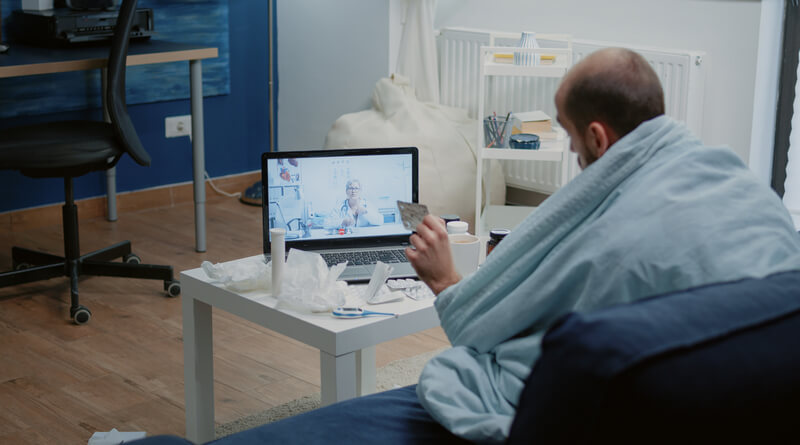For years, the American healthcare system has struggled to provide citizens with equitable and affordable healthcare. While there have been some admirable initiatives to widen people’s access to healthcare by mitigating costs, none of them have successfully been able to put a significant dent in the problem.
Fortunately, new ways of providing healthcare have presented themselves as potentially viable solutions. In particular, telehealth is proving to be a fantastic way to decrease the cost of healthcare while ensuring patients receive the consistent medical care they require.

Understanding how investing more resources into telehealth services can benefit patients is essential to gaining perspective on ways the healthcare system can improve in the coming years.
Here is empowering cost-effective healthcare through telehealth services for patients.
Why Telehealth is Necessary
Scores of Americans refrain from seeking out the medical attention they need because of the exorbitant cost of care in today’s world. This being the case, it’s vital that healthcare organizations put a greater amount of effort into reducing healthcare costs for patients to ensure that socioeconomic status doesn’t impact people’s health outcomes in the way it currently does.
Thankfully, telehealth is a practice that can benefit both healthcare organizations and the patients they serve. Essentially, telehealth services are remote healthcare services that patients receive through electronic means. This typically comes in the form of phone or video calls on either smartphones or computers. Many professionals in the healthcare space are now sure that telehealth will play a key role in the future of nursing and evolving roles of doctors.
Given the fact that America has yet to find an effective healthcare solution that provides all Americans with affordable healthcare, telehealth should be seen as a priority. By utilizing telehealth services to treat an array of patients, healthcare organizations can help patients save money on their healthcare costs and improve their health outcomes.
How Telehealth Can Make Healthcare More Affordable
While many people are aware that telehealth services can make the process of receiving care more convenient, many are unaware of how it makes healthcare more affordable. Understanding how telehealth can reduce healthcare costs is vital for the large-scale adoption of the practice across the country.
Here are some key ways that telehealth can make healthcare more affordable.
Avoiding Worsened Conditions and Hospital Stays
For many Americans who feel like they can’t afford healthcare services, doctor visits are a rare occasion. As a result, some health ailments that could be avoided if caught early are left untreated. This can cause patients to become extremely sick and require them to stay in a medical facility. Stays like this and ongoing treatment for severe ailments can be extremely expensive for the afflicted patients.
Telehealth services, however, have the power to help scores of patients avoid these difficult scenarios. Since telehealth check-ups can be done remotely, many patients are more likely to engage in these medical practices regularly. As a result, healthcare professionals can advise patients to come in when they suspect a deeper underlying health issue is present.
This practice can help many patients avoid developing severe health ailments that could put them in the hospital and require expensive treatment. This being the case, telehealth services can play a key part in helping countless patients save money on healthcare-related expenses.
Reducing the Need for Hospital Visits Through Remote Monitoring
Remote monitoring is continuing to grow in popularity among healthcare providers and patients for its effectiveness and utility. Rather than patients with chronic or severe conditions having to make frequent trips to medical facilities, healthcare professionals having to travel to patients’ homes, or patients having to engage in prolonged hospital stays, remote monitoring allows patients to be remotely monitored by professionals.
Since healthcare providers now have access to their patients’ vitals at all times and can be alerted when there are worrying changes, patients no longer have to unnecessarily see their healthcare providers on a regular basis. As such, they don’t have to pay for ongoing check-ups at the same frequency as being treated without remote monitoring.
In addition to this, remote monitoring is continuing to become more advanced with each passing year. For older adults, this form of healthcare can greatly reduce both the cost of care and the necessity of frequent check-ups. This being the case, telehealth, and remote monitoring can be a significant way to decrease healthcare costs for scores of older Americans and Americans with chronic conditions.
Decreasing Travel Costs
While Americans living in urban areas are typically close to medical facilities, many Americans aren’t so lucky. In fact, there are currently scores of Americans currently living in rural areas that are hours away from the closest hospital. As a result, the costs of traveling to receive medical care can be significant for many patients across the country.
Telehealth, however, can solve this problem by decreasing the need for patients to travel to medical facilities unnecessarily. Instead, patients can receive remote care and only travel to a hospital or clinic when a healthcare professional deems it necessary.
Beyond lowering costs for scores of patients, this practice also makes healthcare more accessible for a vast array of American patients. Consequently, it’s clear that telehealth is a practice that healthcare organizations should be taking advantage of given its ability to decrease costs and improve accessibility to healthcare services.
Telehealth is the Path to Affordable Healthcare
Though the problem of affordable healthcare may seem insurmountable, telehealth is offering itself as a step in the right direction. From helping patients avoid unnecessary hospital stays to reducing the need to travel for medical care, telehealth services are making healthcare cheaper in many significant and exciting ways.
As time goes on, it’s more than likely that most, if not all, healthcare organizations will incorporate telehealth services into their operations.






















